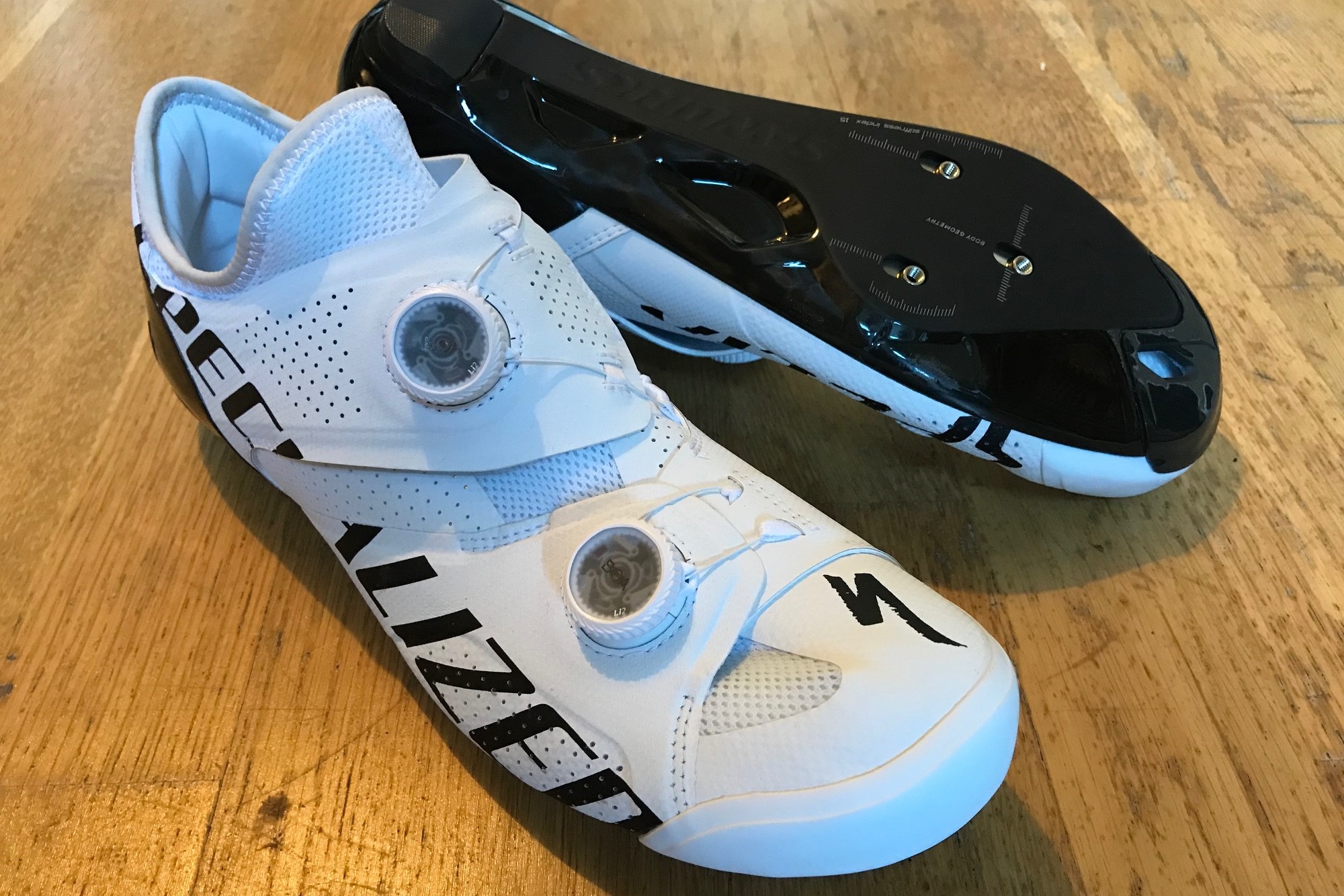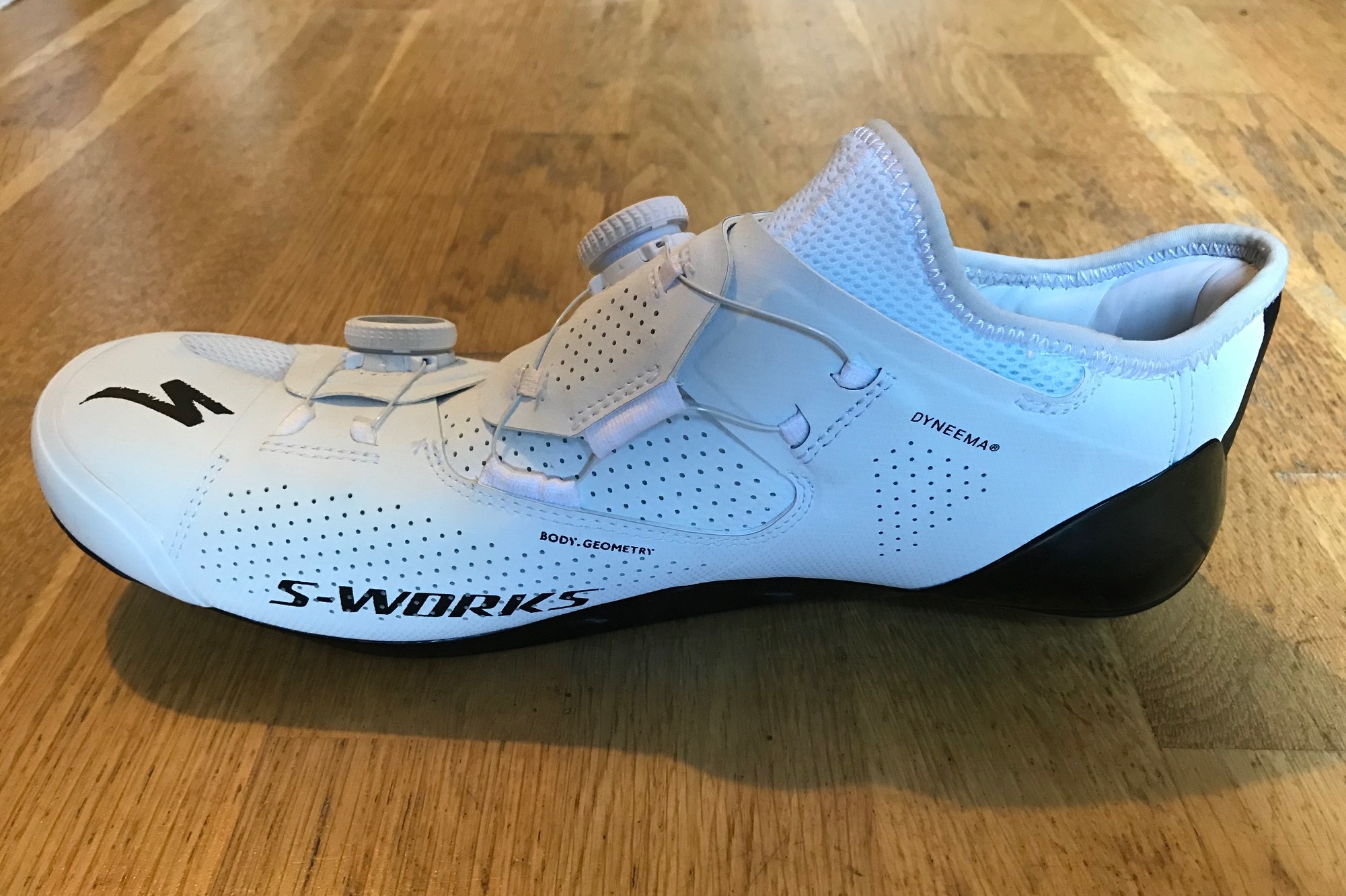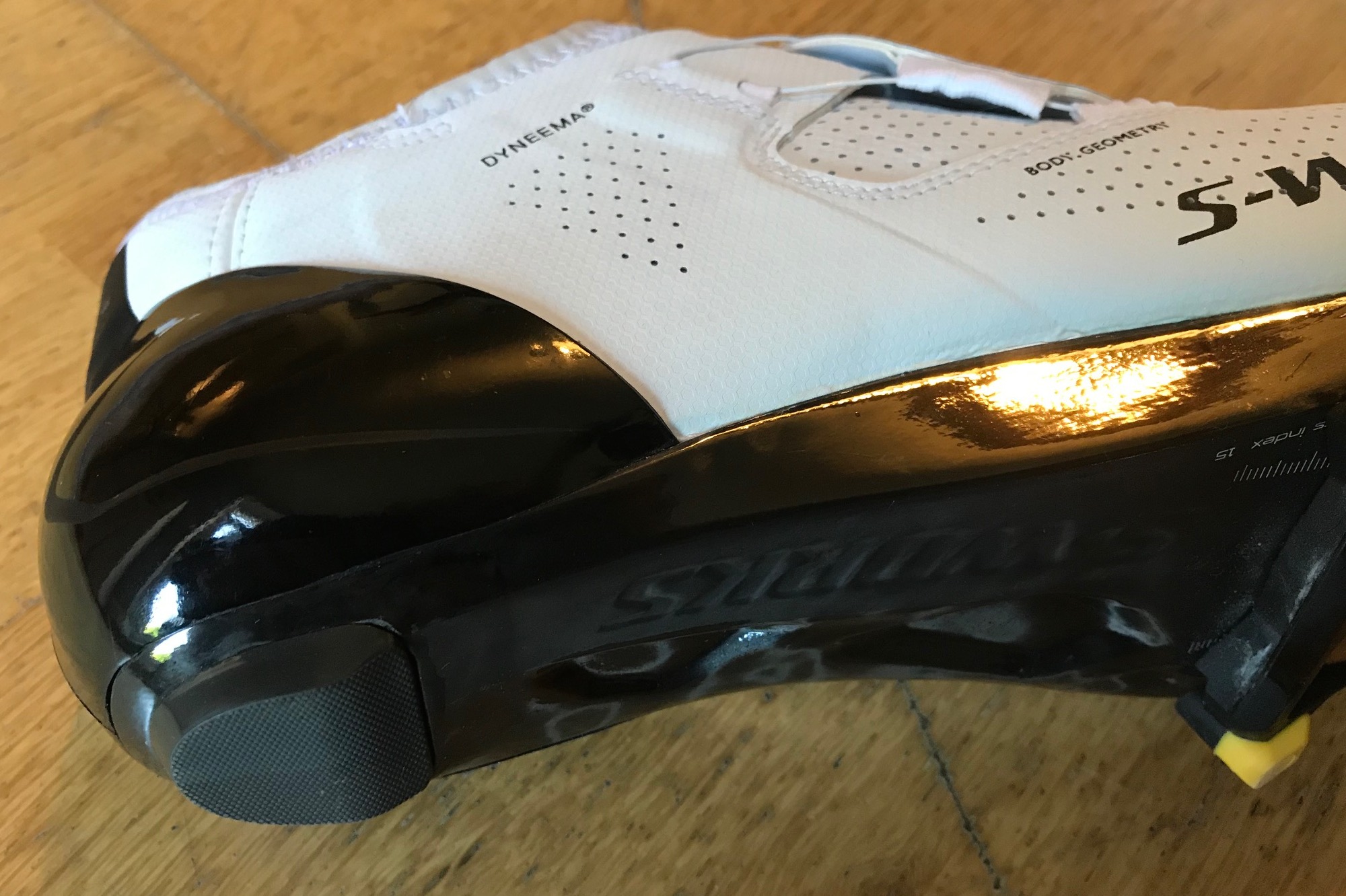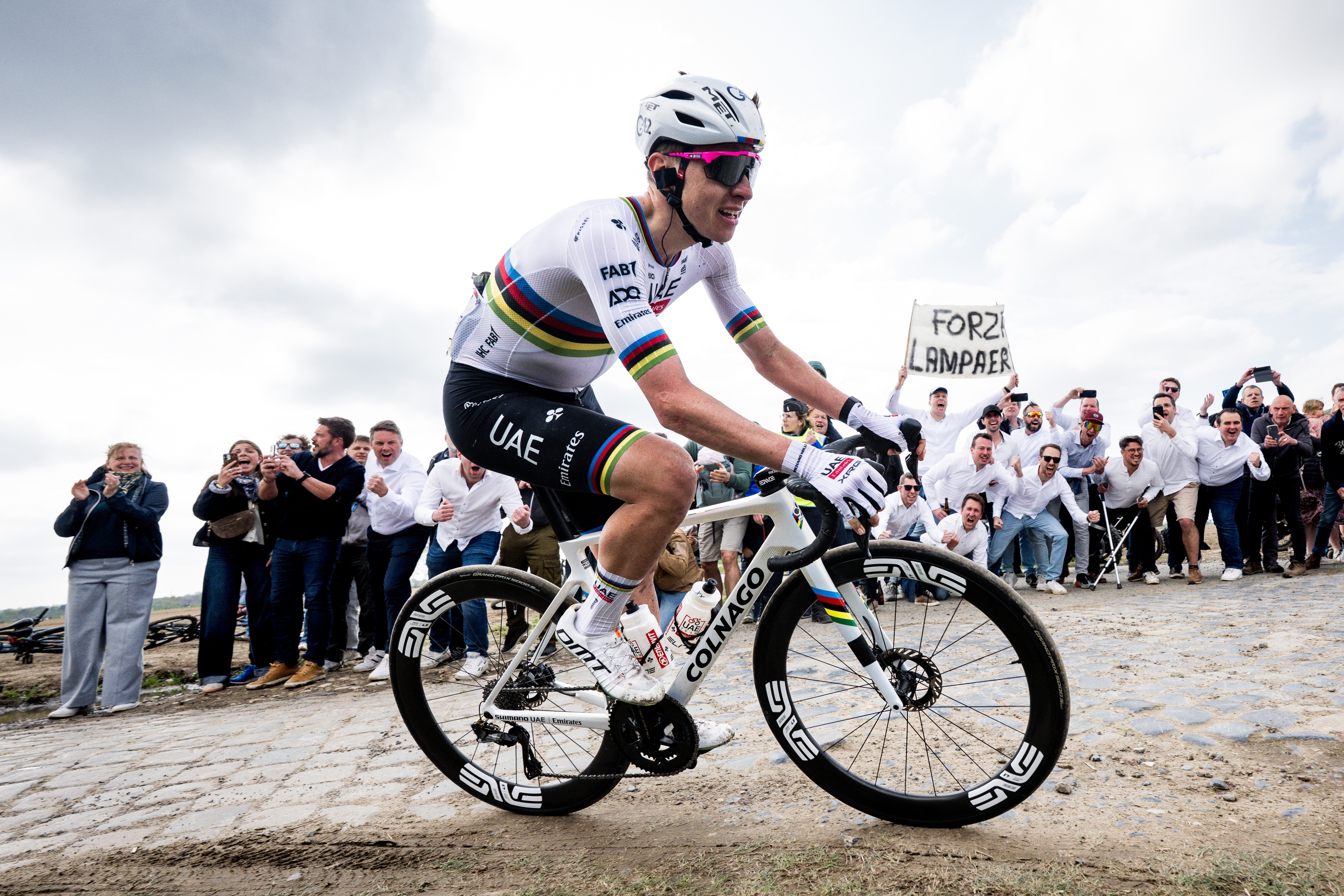Specialized S-Works Ares road cycling shoes review
Specialized's new sprinter's shoe supplies unrivalled foot security and incredible comfort, making it perfect for all types of riding and not just for fast finishes – but your feet need to be the right shape

The Specialized S-Works Ares is a truly revolutionary shoe that actually lives up to the hype – for comfort and power transfer it might be Spesh's best yet. But the shape and construction won't suit all feet, so at this price it's essential to try before you buy.
-
+
Closure system
-
+
Power transfer
-
+
Super stiff sole
-
+
Lightweight
-
-
Might not work for low arches
-
-
Sock liner won't be for everyone
You can trust Cycling Weekly.

Specialized designed these pro-level shoes around the feet of Tour de France green jersey winner Sam Bennett, claiming the S-Works Ares was one per cent faster than any shoe it has ever made.
Its stated aim was “to crack the code of locking in support without sacrificing comfort.”
I found the Ares succeeds in doing this, but your feet will need to be the right shape, preferably with high arches if comfort is not to be sacrificed.
The Ares does not replace the S-Works 7 shoe – it will be available alongside it to give riders more choice, according to Specialized, but neither is it marketed as sprint specific.
Construction
Usually the sole is literally the basis for a shoe, but Specialized told us that even for riders like Bennett there’s no measureable performance in going even stiffer than the FACT Powerline carbon sole – the one that the S-Works 7 uses and which gets the top score of 15 on Specialized's own stiffness index – so it used the same sole and turned its attention to the closure system.

The Ares has a radical construction with the upper divided into two distinct sections via cutaway straps. The rearmost strap anchors from the heel, while the front one brings the two halves together over the toes.
The heel cup itself is very stiff, with a plastic shell outer and very firm padding inside around the Achilles tendon.
Instead of a tongue, there’s a one-piece sock liner which is intended to eliminate overlapping surfaces. It’s this Dyneema-reinforced stretchy, mesh-like fabric that you can see between the straps, so ventilation is good.
Specialized told us that with the Ares it had created a completely new way to hold Bennett’s foot in a vice-like grip while not inhibiting the movement of the tendons on top of the foot or creating pressure points.

The shoe’s head designer, Rob Cook, explained how it works: “Normal shoes close in the middle around the centre of the foot. The Ares has a closure system with a Y-shaped cable arrangement and the volume adjustment via Boa Li2 dials takes place on the medial [inner] side. We’re pulling the foot down, the arch into the inside of the shoe, instead of allowing it to swim and roll in a shoe. This system takes the volume out of a shoe in the area where we want to create contact.”
You can read more about the design process in our launch story.
Everybody knows that white shoes are the fastest, but white shoes never look the same again once they've been out in the rain. So Spesh also makes them in black/red and black if you prefer to keep them looking box fresh despite bad weather and don't mind giving up a few watts.
The S-Works Ares still includes Specialized’s Body Geometry features – the varus wedge, longitudinal arch and metatarsal button. Our test pair weighed 255g per shoe and is claimed to be slightly lighter than the S-Works 7 thanks to the lack of tongue.
The ride
The complicated strap layout and one-piece sock do make the Ares a bit trickier to put on than most shoes, but I’m glad that didn’t put Specialized off. As with anything, it's worth spending a bit of time on it if you want to get it right.
Because the sock liner is fairly close fitting, you have to push your forefoot quite hard into the shoe before you can get the heel in. Some wearers have noted that a shoehorn could be handy here. However, if you don’t have a shoehorn you can simply tread down hard and the heel cup shell is sturdy enough to withstand it. I haven't noticed any deformation at all.
The top of the sock liner then needs to be pulled up further towards the ankle to eliminate bunching – which I found doesn’t happen as long as you’re wearing good, thin socks.
The Boa wires need to be arranged above the strap on the inner flap and then you’re good to go.
It’s tempting to crank down the Boa dials as you would with other shoes, but the Ares doesn’t need that. I even found one click backwards from normal was better because the enclosing fit of the upper works so well.
As for the fit, the toebox is surprisingly roomy. You can see the Ares is more spoon shaped than the conventional cycling shoe that tapers towards the toes (sometimes crushing them if the fit isn’t quite right).
I loved the close fit of the heel: a baggy heel is what often lets down lower-level shoes but that Ares gets this exactly right.
Our size 44 test pair came up true to size, too.

However, this is where it becomes a review of two halves: while my right foot felt perfectly locked in and 100 per cent comfortable, as Specialized intended, the left foot felt as if it was treading on something hard towards the rear of the arch. I suspect that the upper has too much of a 'waist' at the midfoot, forcing the arch upwards. And of course the carbon sole, which is actually wider than many competitors' carbon sole, sits directly under the arch with its unyielding stiffness.
Admittedly I’m slightly flat footed, a pronator in my former running life choosing stability shoes to stave off shin splints, but it has never caused me a problem with cycling shoes. Although I don’t blame Specialized for it – I literally lay the blame at my own feet, or foot, because all other reviews I’ve read of the Ares praise for its exceptional level of comfort – I think it's worth repeating that not all shoes, no matter how meticulously designed for top pros they are, or how expensive, will fit all feet.
If my left foot had felt as good in the shoe as my right, I would be praising the Ares to the skies, proclaiming that the S-Works Ares are up there with the best shoes I've worn. I would be saying that Specialized has taken that feeling of being locked in but still comfortable to another level. That there's a unique feeling of 360° cushioning and that even vibrations through the pedal are well damped, adding to the sensation. If my left foot was the mirror image of my right foot I'm convinced the Ares would bring performance gains and so it's a big disappointment that I won't be able make the most of a probable increased efficiency and resulting uplift in power in my time trialling this year.
So one half of me would like give the Ares top marks, but since I've never encountered a problem with foot discrepancies and cycling shoes before, the other half would have to caveat it by saying they won't fit every foot shape.
If you’re looking for high-end shoes and have low arched, flattish feet – the Sidi Sixty works well, also the Time Osmos and I’d especially recommend the Giant Surge Pro. All these three shoes have their carbon sole cut away under the arch, so there's nothing hard to tread on if that's the way your foot is inclined. The Giant’s sole under the midfoot actually reduces to a carbon beam, allowing a little torsional rotation so that the heel and lower leg can move independently of the forefoot and the pedal – and that appears to suit me. The Specialized FACT sole, by comparison, wants to keep your entire foot in the same plane by directly supporting the arch, but in order for it to do that effectively, as I found, your foot needs to be compatible.
Value
Retailing at £375, the S-Works Ares costs £15 more than the S-Works 7 but £5 less than the S-Works Vent, while the Exos is the most expensive at £450. Incredible as it sounds, north of £300 is new the price of range-topping cycling shoes. The Shimano S-Phyre RC902 and the Sidi Sixty both break the £300 barrier but slightly undercut the Ares.
With the Ares it's clear that a lot has gone into the R&D, it uses an expensive carbon sole, top-of-the-range Boas, carefully selected fabrics, build quality is superb, it's very light and it's used in the WorldTour. If you're looking for this type of premium shoe I'd recommend the S-Works Ares, but it's essential to try them on before you spend this sort of money.

Thank you for reading 20 articles this month* Join now for unlimited access
Enjoy your first month for just £1 / $1 / €1
*Read 5 free articles per month without a subscription

Join now for unlimited access
Try first month for just £1 / $1 / €1
Get The Leadout Newsletter
The latest race content, interviews, features, reviews and expert buying guides, direct to your inbox!
Simon Smythe is a hugely experienced cycling tech writer, who has been writing for Cycling Weekly since 2003. Until recently he was our senior tech writer. In his cycling career Simon has mostly focused on time trialling with a national medal, a few open wins and his club's 30-mile record in his palmares. These days he spends most of his time testing road bikes, or on a tandem doing the school run with his younger son.
-
 'I'll take a top 10, that's alright in the end' - Fred Wright finishes best of British at Paris-Roubaix
'I'll take a top 10, that's alright in the end' - Fred Wright finishes best of British at Paris-RoubaixBahrain-Victorious rider came back from a mechanical on the Arenberg to place ninth
By Adam Becket Published
-
 'This is the furthest ride I've actually ever done' - Matthew Brennan lights up Paris-Roubaix at 19 years old
'This is the furthest ride I've actually ever done' - Matthew Brennan lights up Paris-Roubaix at 19 years oldThe day's youngest rider reflects on 'killer' Monument debut
By Tom Davidson Published
-
 'One of the hardest races I've ever done in my life' - Tadej Pogačar finishes runner-up on Paris-Roubaix debut after crash
'One of the hardest races I've ever done in my life' - Tadej Pogačar finishes runner-up on Paris-Roubaix debut after crashWorld champion reacts to 'extremely hard' battle with Mathieu van der Poel
By Tom Davidson Published